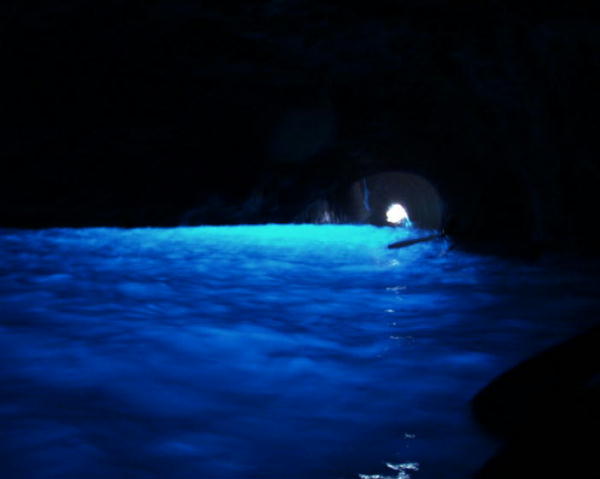|
|
|
Blue Grotto

The blue grotto, discovered only in 1826, it really used to be known by the native population as Gradola or Gratula grotto, (nativa name from the Latin criptula or crypta). It was explored for the first time by the Germanpainters August Kopish and Ernst Fries who followed the directions of Mario Pagano and who were guided by the fisherman Angelo Ferraro. The grotto's entry underwent two temperings, a first one during the Roman age, when it was presumably used as nymphaion, and the second one in the same year of the discovering. In 1964 two statues surfaced from the bottom of the grotto: a Poseidon and a Triton. The Poseidon represents an adult male figure, with a thick beard, the right lifted arm and the left one forward, while the Triton represents a beardless figure with long hair and a crown. Unfortunately, both are in a bad state, owing to the strong sea's corrosion. The fact they were carved from the knees onwards and they're particularly rough no the dorsal side shows that the statues had been used by the Romans as decorations on some wall. Infact, under water, four niches and an ancient sea-level can be discerned: so, probably, the statues should seem as rising on the water. Starting from Kopish, all the descriptions of the Blue Grotto have always talked about its picturesque strong blue color.. This colouring exists thanks to a particular effect between the sun light and the shape of the entry : the light lets in the cavern from a submarine opening, situated just under the first entry above, which is placed on the sea-level ; the submarine opening filters and stops the red colors while it lets the blue ones cross the water. The service to visit the Grotto starts every day from 9.00 untill 5.00 p.m starting from the arbour of Marina Grande by boat. The price is £22.200 -workdays- and £ 23500-holidays-. It's also possible to reach the Grotto a-shore, starting from Anacapri and following the road which starts in the zone called "Mulino a vento" and ends just above the Grotto.